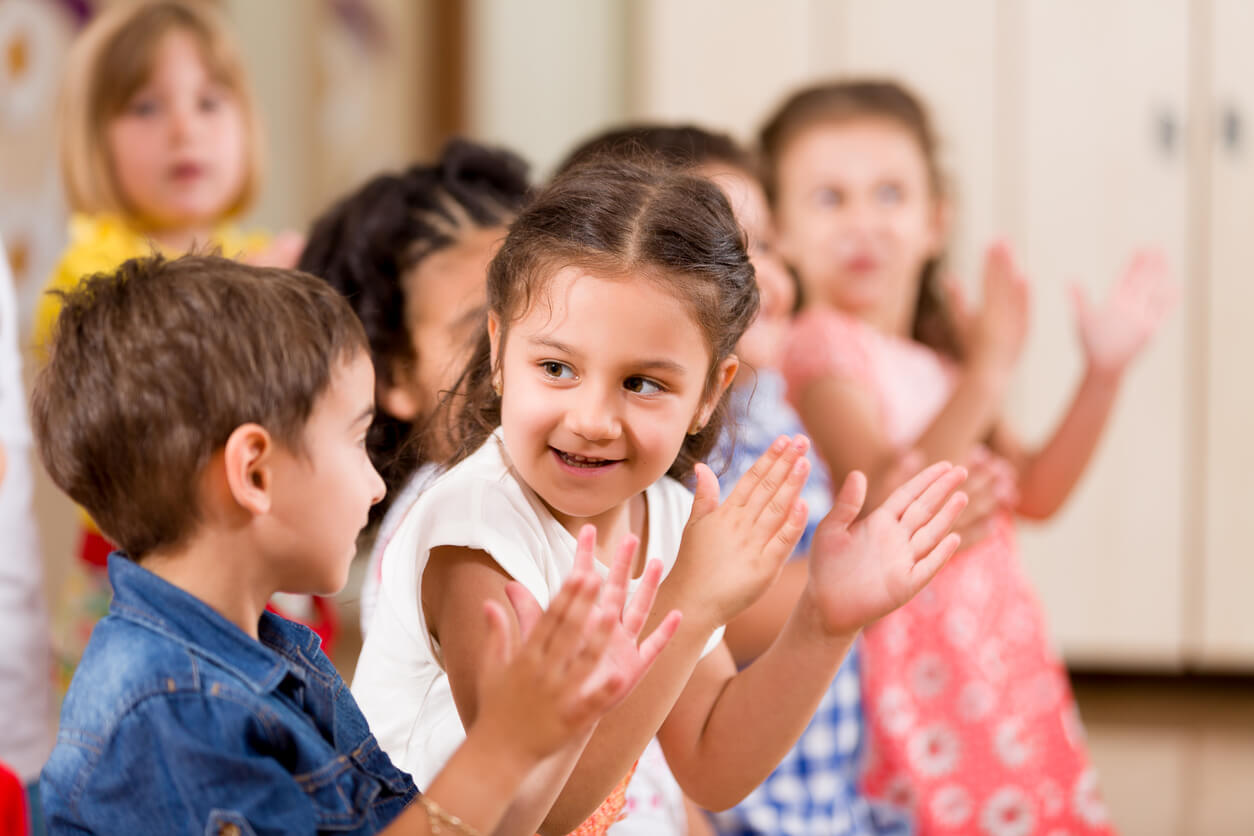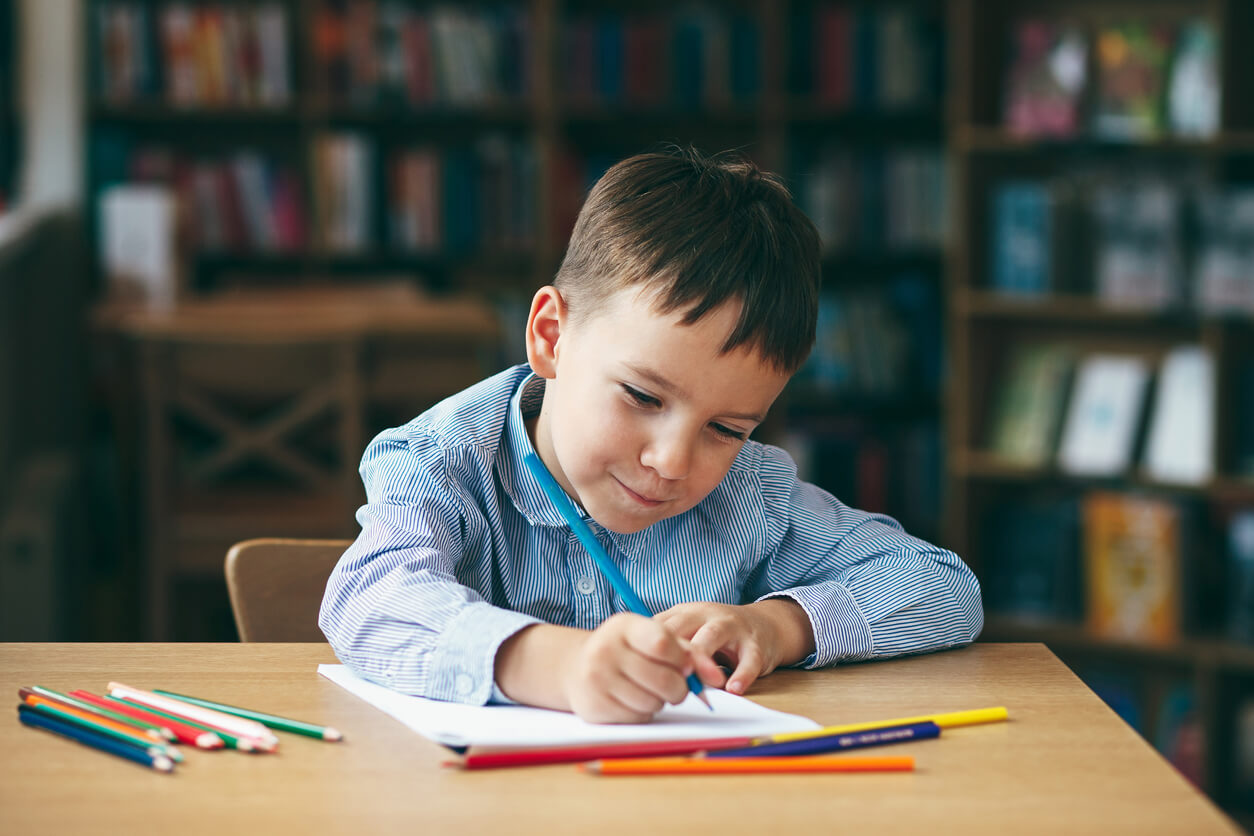3 Games to Work on Children's Emotions


Written and verified by the psychopedagogue María José Roldán
Emotions are necessary in people’s lives, and although we have them innately, what we don’t know if we’re not taught is how to manage them. In this regard, understanding what we feel at every moment is essential to achieve well-being. Therefore, we’re going to explain some games to work children’s emotions.
Emotions should be worked on from early childhood. Only in this way can they be managed correctly in adult life. When we manage to understand them, we can identify them and communicate them in an assertive way. However, to achieve a good emotional education, it’s a good idea to have some games, as children learn through motivation and fun.
Ideally, they should be simple games so that they can perform and understand them without problems. In this way, they’ll be able to identify their own and other people’s emotions. And, best of all, they’ll be able to express and recognize them whenever necessary. This is a great way to carry out internal work and help children begin to internalize empathy.
Write down these games to work on children’s emotions
Here are some tips on how to work on children’s emotions through play. Don’t miss detail and write down those that you consider best to teach your children.

1. The Emotion Detective
This game consists of becoming an emotion detective. For example, you have to identify emotions in different resources, such as in the faces of other classmates, on cards, in magazines, in stories, or in people appearing on television. The objective is to identify or guess what’s happening in those expressions and to know which emotion is being expressed.
Once you get it right, you have to try to imitate that expression and then explain a situation that has made you feel that way once. Also, if it’s a memory or a situation that makes you feel bad, think about what you would do to feel better if it happened again.
Also, with the emotions found, you can make a dictionary of emotions! This way, you can refer to it whenever you need to remember what a particular emotion was. This way, they’ll be able to internalize them much better.
2. Write down emotions
Writing a diary is a fabulous tool to work on emotions and identify them. In this way, we can be aware of them and what they transmit to us. Of course, for younger children, you’ll need to adapt the type of diary, for example, with drawings.
In any case, it’s important to express emotions through writing. This way, children will begin to understand the importance of communicating what happens to us, even if it’s in a notebook that no one else can read unless we decide otherwise.

3. Draw my emotions
This activity is more personal and is worth doing so that children can better internalize their own emotions and understand them. It’s an ideal resource to be able to express through drawing the most intense sensations they experience. In addition, it’s a way to connect with the emotional and rational mind at the same time.
In this way, little ones unload their emotion and, at the same time, they can express them so that later, it’ll be easier to look for solutions to what makes them feel bad. If they prefer, they can also tear up the drawing when they finish it, if that makes them feel better. What’s important is that they enjoy and unload that emotion in order to understand it. You can accompany them in this activity and you can reinforce them with positive words.
The importance of emotional education
Emotional education is fundamental in people’s lives to achieve more success on a personal and professional level. Although we’re born with emotions, we’re not born with emotional education. That’s why it’s important to educate children in this aspect so that everything’s easier for them. Even adults are still learning to manage emotions according to the circumstances of life that we have to live.
Although emotional education takes place throughout life, it’s from birth and up to 6 years old when it’s essential to integrate children into the world of emotions to promote their development. For this, it’s important to take into account that the adult is the greatest example and guide for children. Therefore, we must always be present and accompany them in their play and learning.
Emotions are necessary in people’s lives, and although we have them innately, what we don’t know if we’re not taught is how to manage them. In this regard, understanding what we feel at every moment is essential to achieve well-being. Therefore, we’re going to explain some games to work children’s emotions.
Emotions should be worked on from early childhood. Only in this way can they be managed correctly in adult life. When we manage to understand them, we can identify them and communicate them in an assertive way. However, to achieve a good emotional education, it’s a good idea to have some games, as children learn through motivation and fun.
Ideally, they should be simple games so that they can perform and understand them without problems. In this way, they’ll be able to identify their own and other people’s emotions. And, best of all, they’ll be able to express and recognize them whenever necessary. This is a great way to carry out internal work and help children begin to internalize empathy.
Write down these games to work on children’s emotions
Here are some tips on how to work on children’s emotions through play. Don’t miss detail and write down those that you consider best to teach your children.

1. The Emotion Detective
This game consists of becoming an emotion detective. For example, you have to identify emotions in different resources, such as in the faces of other classmates, on cards, in magazines, in stories, or in people appearing on television. The objective is to identify or guess what’s happening in those expressions and to know which emotion is being expressed.
Once you get it right, you have to try to imitate that expression and then explain a situation that has made you feel that way once. Also, if it’s a memory or a situation that makes you feel bad, think about what you would do to feel better if it happened again.
Also, with the emotions found, you can make a dictionary of emotions! This way, you can refer to it whenever you need to remember what a particular emotion was. This way, they’ll be able to internalize them much better.
2. Write down emotions
Writing a diary is a fabulous tool to work on emotions and identify them. In this way, we can be aware of them and what they transmit to us. Of course, for younger children, you’ll need to adapt the type of diary, for example, with drawings.
In any case, it’s important to express emotions through writing. This way, children will begin to understand the importance of communicating what happens to us, even if it’s in a notebook that no one else can read unless we decide otherwise.

3. Draw my emotions
This activity is more personal and is worth doing so that children can better internalize their own emotions and understand them. It’s an ideal resource to be able to express through drawing the most intense sensations they experience. In addition, it’s a way to connect with the emotional and rational mind at the same time.
In this way, little ones unload their emotion and, at the same time, they can express them so that later, it’ll be easier to look for solutions to what makes them feel bad. If they prefer, they can also tear up the drawing when they finish it, if that makes them feel better. What’s important is that they enjoy and unload that emotion in order to understand it. You can accompany them in this activity and you can reinforce them with positive words.
The importance of emotional education
Emotional education is fundamental in people’s lives to achieve more success on a personal and professional level. Although we’re born with emotions, we’re not born with emotional education. That’s why it’s important to educate children in this aspect so that everything’s easier for them. Even adults are still learning to manage emotions according to the circumstances of life that we have to live.
Although emotional education takes place throughout life, it’s from birth and up to 6 years old when it’s essential to integrate children into the world of emotions to promote their development. For this, it’s important to take into account that the adult is the greatest example and guide for children. Therefore, we must always be present and accompany them in their play and learning.
All cited sources were thoroughly reviewed by our team to ensure their quality, reliability, currency, and validity. The bibliography of this article was considered reliable and of academic or scientific accuracy.
- La letra, (2018) Adivina las emociones: Un juego de inteligencia emocional. Editorial: Quid+
This text is provided for informational purposes only and does not replace consultation with a professional. If in doubt, consult your specialist.








